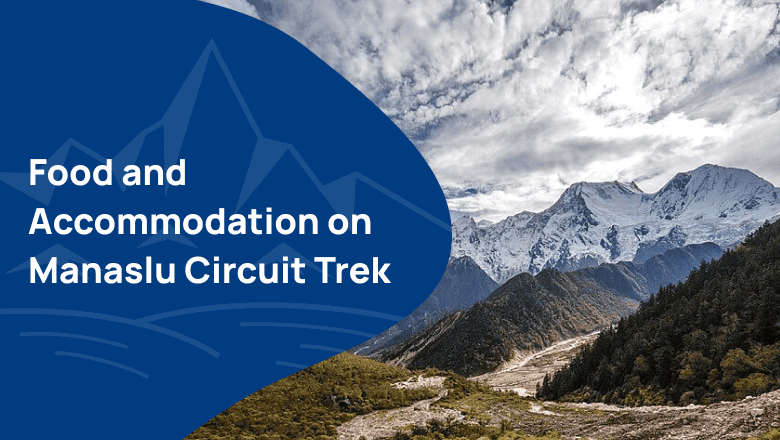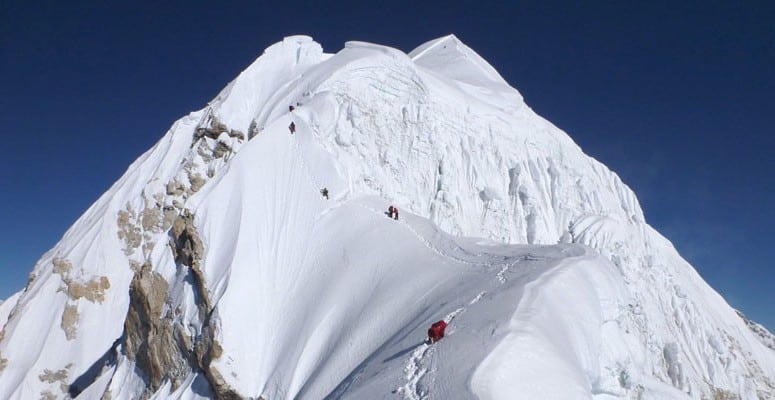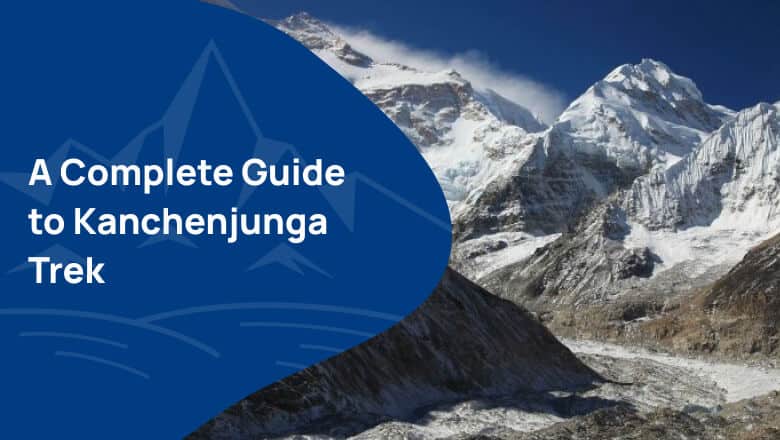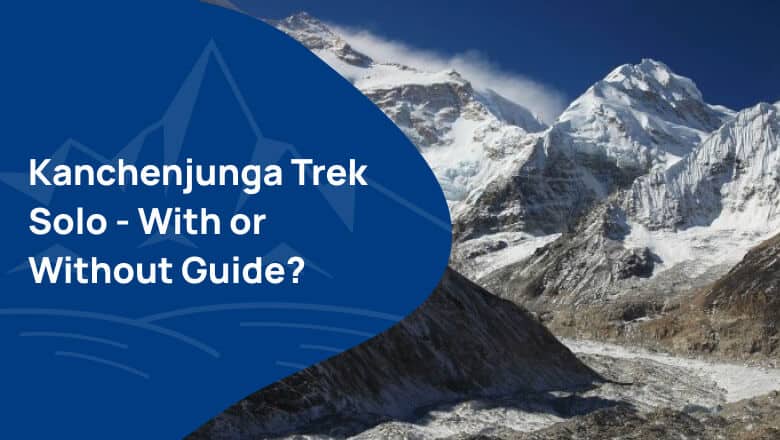The Manaslu Circuit Trek is a great way to witness the Himalayas and experience Nepal’s culture. You can see everything from the challenging trails and beautiful views to remote villages and ancient monasteries.
Having led treks here for years, I’ve seen firsthand how important food and accommodation are to the overall experience. They can make or break your trek, so you need to pay attention to them.
On this tough trek, you must eat nourishing meals to keep your energy up. Carbohydrates like rice and pasta are excellent fuel for the journey. Staying hydrated is crucial, too, especially at high altitudes.
Moreover, when the sun sets and temperatures drop, a cozy place to rest is essential. A good night’s sleep prepares you for the next day’s adventures. So, it would be best if you chose clean and comfy accommodations.
Sadly, some trekkers overlook the significance of food and accommodation and end up tired, sick, and unable to enjoy the beauty around them.
That’s why I always make sure to share my knowledge of food and accommodation with my trekkers.
Let’s dive in and explore the types of accommodation and variety of food and drink options that await you on the Manaslu Circuit Trek.
Explore our comprehensive guide on Manaslu Trekking to learn about the factors that affect the trek, such as challenges, trip highlights, average costs and tips to conquer the obstacles.
Contents
Do you have any question about trip to Nepal?
Tell us about your trip to Nepal and what you expect from it. We will answer your questions in 24 hours and help you design a trip with a comfortable itinerary to meet your needs best.
Types of Accommodation Available
There are two main types of accommodation available on this trek: Teahouses and Lodges.
Teahouses
Teahouses are the most common type of accommodation along the trail, and they are usually located in villages or along the main trekking trails.
These tea houses range from simple ones with basic amenities to more upscale options equipped with facilities like hot showers and Wi-Fi.
Lodges
Lodges are larger and more comfortable than teahouses, but they also tend to be more expensive. Lodges often have private bathrooms, hot showers, and Western food options.
They are typically located in larger villages or towns, and they may offer additional amenities such as laundry service and internet access.
In addition to teahouses and lodges, there are a few other types of accommodation available on the Manaslu Circuit. These include camping, homestays, and high-altitude huts.
- Camping
- Homestays
Here are some of the frequently asked questions related to accommodation that might be helpful for you.
a. How are the Rooms?
The rooms in the tea houses are designed with a focus on practicality and comfort rather than luxury. Here’s what you can expect in most of the teahouses:
- Twin Beds: Rooms usually have two single beds with clean sheets and blankets, perfect for trekkers. If you need more comfort, bring a portable pillow. Nights can be cold at high altitudes, so consider packing a sleeping bag for extra warmth.
- Basic Furnishings: The rooms are simply furnished, considering a trekker’s fundamental needs. You may spot a small table or some hooks for hanging your gear.
- Communal Living: In certain teahouses, particularly as you climb to higher altitudes, you may find yourself sharing rooms with other hikers. You may take this opportunity to connect with fellow adventurers and exchange stories.
- Insulation and Heating: The teahouse rooms usually don’t have insulation, and there’s no heating system for individual rooms. But, most teahouses do have a shared space with a stove or heater. This is where trekkers can come together to stay warm and enjoy each other’s company.
- Electricity and Charging Facilities: Certain tea houses provide power supplies and charging options for your gadgets. However, this might require an extra fee. So, it’s wise to bring along a power bank to keep your devices charged throughout your journey.
b. What about the Toilets?
The toilet arrangements in the teahouses can vary, with some offering western-style flush toilets and others providing more basic squat toilets.
- Lower Altitudes: In the lower sections of the trek, you’ll likely find western-style flush toilets in the teahouses.
- Higher Altitudes: As you ascend, squat toilets are more prevalent. These may be challenging for unfamiliar people, but they’re pretty usable with a bit of practice.
- Shared Facilities: The toilet facilities in the teahouses are often communal. There might be times when you have to wait your turn, especially during busy times like early mornings or evenings.
- Hygiene and Supplies: Not all toilets will have toilet paper and handwashing facilities. It’s a good idea to bring your own toilet paper, hand sanitizer, and a small towel to maintain your personal hygiene during the trek.
- Waste Disposal: Some locations along the trek might have eco-friendly composting toilets. These facilities help reduce the environmental impact of waste disposal in the region. Following any guidelines posted in these facilities is essential to ensure their proper use.
c. What Other Facilities are Available?
In addition to the basic amenities, teahouses offer a few other facilities to make your stay more comfortable. These include the facilities listed below:
- Shared Dining Area: Teahouses typically have a communal dining area where meals are served. This is also a place where trekkers can socialize and share their experiences.
- Wi-Fi: Some teahouses might offer Wi-Fi access, although it’s usually limited and might come with an extra charge.
- Hot Showers: A hot shower can be a real luxury after a long day of trekking. Some teahouses offer this facility, often for an additional fee.
- Laundry Facilities: Laundry services are generally not available in the teahouses. It’s a good idea to bring quick-drying clothes to wash and dry yourself.
- Shops and Stalls: Along the trek, you might come across small shops or stalls selling snacks, bottled water, and other essentials. However, it’s a good idea to carry some supplies with you as the availability of items decreases as you trek higher.
- Medical Facilities: Medical facilities are limited along the trekking trail. There might be some health posts or pharmacies in larger villages. It’s crucial to carry a well-stocked first-aid kit and any necessary medications with you.

Manaslu stands tall as the eighth highest mountain in the world. With Annapurna to the west and Ganesh Himal to the right, it forms a mountain range that is truly spectacular to behold. While most people keep their eye on Everest, this circuit goes underappreciated. However, it is great news for thrill-seekers like you as you will be able to trek here in peace and enjoy the quiet beauty along the way. You will be greeted with magnificent peaks like Manaslu, Cheo Himal, Himlung Himal, Annapurna II, Kang Guru, Gyaji Kang, and Nam Jung. Setting…
Food Facilities Along the Manaslu Circuit Trek
At low altitudes, such as Machha Khola, Jagat, Deng, Namrung, there are wonderful restaurants. And during peak seasons, they even hire professional chefs. These restaurants cater to the normal cuisines, like Nepalese, Tibetan, Indian, and Continental cuisines
At high altitudes, such as Lho Gaun, Samagaon, Samdo, and Dharmashala, there are no excellent restaurants, but locals serve great local dishes. Local household women have adequate necessary skills in preparing typical Nepalese dishes according to their culture.
While trekking on the Manaslu Circuit, you’ll usually have three main meals daily – breakfast, lunch, and dinner. Having some snacks on hand for quick energy boosts during your trek is also wise.
Breakfast:
The breakfast menu at tea houses usually includes items like,
- Porridge
- Eggs
- Tibetan bread
- Oats
- Chapati
- Pancakes
- Cornflakes
- Muesli
- granola with milk
- Toasts
- Hot drinks like tea
Note: The number of items in the set menu decreases with an increase in altitude.
Lunch
The lunch menu at tea houses usually includes items like,
- Chow mein
- Spaghetti
- Pasta
- Sandwich
- Momo (dumplings)
- Vegetables and salad
- Dal Bhat
- Potatoes items like fried potatoes, Finger Chip
- Snacks items like prawn crackers and papad
- Sherpa Stews.
Dinner
The dinner menu at tea houses usually includes items like,
- Dal bhat
- Thukpa
- Fried rice
- Chow mein
- Pasta
- Pizza
- Momos
- Soup
- Salad
- Meat or fish curry
Moving on, here are some of the frequently asked questions related to foods that might be helpful for you.
a. What to eat?
Teahouses serve a variety of dishes, combining local Nepalese and international cuisines. The traditional Nepali meal, Dal Bhat, is a common choice for many trekkers.
During your trek make sure to eat plenty of carbohydrates, such as rice and pasta. These foods will give you the energy you need to keep going.
b. Can You Get Meat on the Trek?
Yes, you can find meat dishes, especially in the regions at lower altitudes. These areas have easier access to supplies and better storage facilities, making serving meat possible.
However, as you continue your trek and reach higher altitudes, you’ll notice that meat items become less and less available.
c. How Fresh is the Food on the Trek?
The food that you’ll be served during your trek is typically prepared right on the spot in the teahouses and lodges. This means that you’ll be getting meals that are cooked fresh.
Nonetheless, it’s important to note that the freshness of the ingredients used in these meals can vary. This is because the altitude and location of the teahouses can affect the availability and freshness of certain ingredients.
Despite these challenges, the teahouse owners do their best to serve meals made from the freshest ingredients possible.
d. Water Sources on the Manaslu Circuit Trek
The availability of safe drinking water along the trail can vary, and you need to be mindful of the potential risks of dehydration and waterborne illnesses.
There are 4 main ways to get drinking water on the Manaslu Circuit Trek:
- Bottled water is available in some places, but it can be expensive and hard to find in remote areas.
- Boiled water is a safe and affordable option. Teahouses and lodges usually offer boiled water for a small fee.
- Water purification tablets or drops can be used to make untreated water safe to drink. They are lightweight and convenient, but they may not be effective in all areas.
- Water filters or filtration systems provide a reliable source of safe drinking water. They are especially useful for those who prefer not to rely on bottled water or boiled water.
Cost of Food and Accommodation along the Manaslu Circuit Trek
The cost of food and accommodation along the Manaslu Circuit Trek can vary depending on several factors, such as the season, altitude, and individual teahouses.
a. Accommodation
Staying at a teahouse during your trek can cost anywhere from $5 to $30 per night. The price depends on the location and the facilities offered. As you climb higher, the cost may increase due to the remoteness and transportation challenges.
b. Food
The cost of meals along the trek can range between $3 to $10 per dish. As you climb higher, the prices tend to increase due to the limited availability of resources and the transportation of goods to these remote locations.
Final Say
The food and accommodation on the Manaslu Circuit Trek are generally of good quality and will provide you with the energy you need to complete your trek. However, it is important to be aware that the food may not be as varied as you are used to, and it is important to be prepared for this.
Here are some tips for choosing food and accommodation on the Manaslu Circuit:
- Make sure to eat plenty of carbohydrates. These foods will give you the energy you need to keep going.
- Drink plenty of fluids, especially water. Dehydration is a major problem on high-altitude treks.
- If you have any dietary restrictions, be sure to let your lodge know so that they can accommodate you.
- If you are on a budget, teahouses are a good option. They offer basic lodging and meals, and they are usually located in villages or along the main trekking trails.
- If you are looking for a more comfortable and luxurious option, then a lodge is a good choice. They often have private bathrooms, hot showers, and Western-style food options.
They are typically located in larger villages or towns, and they may offer additional amenities such as laundry service and internet access.
With a little planning, you can easily find great food and accommodation on the Manaslu Circuit. This will help you have a safe and enjoyable trek, and you’ll be well-rested and energized to explore the stunning scenery.
Ready to book trips now?
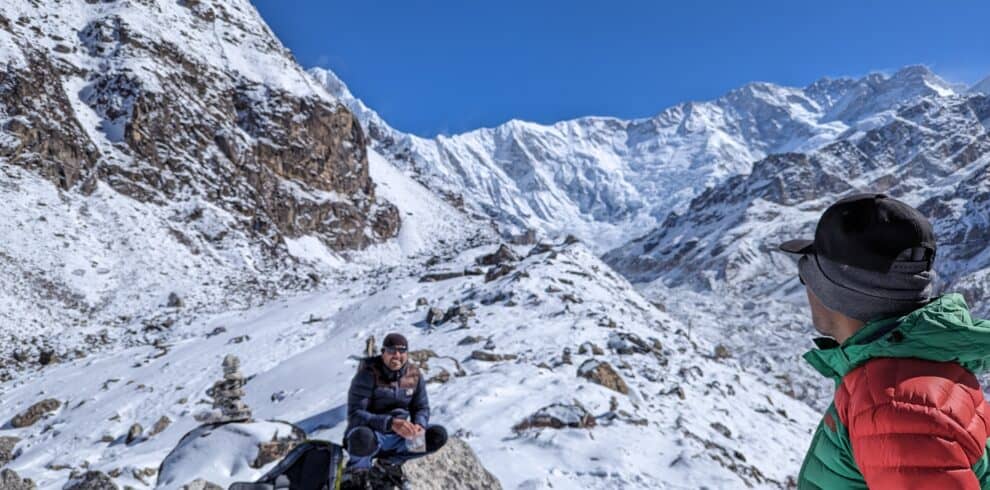
Kanchenjunga (8598m), the third highest peak in the world, undoubtedly is one of the most impressive massifs in the Himalayan range. The Kanchenjunga Circuit Short Trek refers to visiting both North and South Kanchenjunga Base Camps The Kanchenjunga Conservation Area protects the entire Kanchenjunga region. It is a prohibited location in Nepal so, to trek to Kanchenjunga, trekkers must obtain a special permit from the Nepalese government. The route is abundant in both flora and fauna. If you're lucky, you might spot some endangered animals including red pandas, snow leopards, Himalayan black bears, and musk deer along the route; numerous endangered…
Bokta Peak (6143 meters) is a growing destination for an easy peak climbing experience. It lies in the Taplejung district of the Eastern part of Nepal. Bokta peak stands very close to Mount Kanchenjunga (8586 meters) – the third highest mountain peak in the world. Bokta Peak is one of the 400 peaks that are officially open for mountaineering thrill in Nepal. This peak is open for climbing under Nepal Mountaineering Association (NMA) from 2002 onwards. This peak is relatively easy as compared to others in this region. However, the climb does demand some climbing skills, strength, stamina, and endurance…
Kanchenjunga derives its name from two words from the Tibetan dialect 'Kanchen' and 'Dzonga,' which translates to “five treasures of the great snow.” It lies at the northeast border of Nepal and Sikkim in one of the remotest regions. It got the name from the five mountains making the Kanchenjunga Massif. The five peaks, namely Kanchenjunga I (8586m), Kanchenjunga West (8505m), Kanchenjunga South (8494m) and Kangbachen (7903m) made Kanchenjunga the tallest peak until the discovery of Everest in 1849. It is now the third highest mountain in the world, with an altitude of 8586m. It has several peaks rising from…
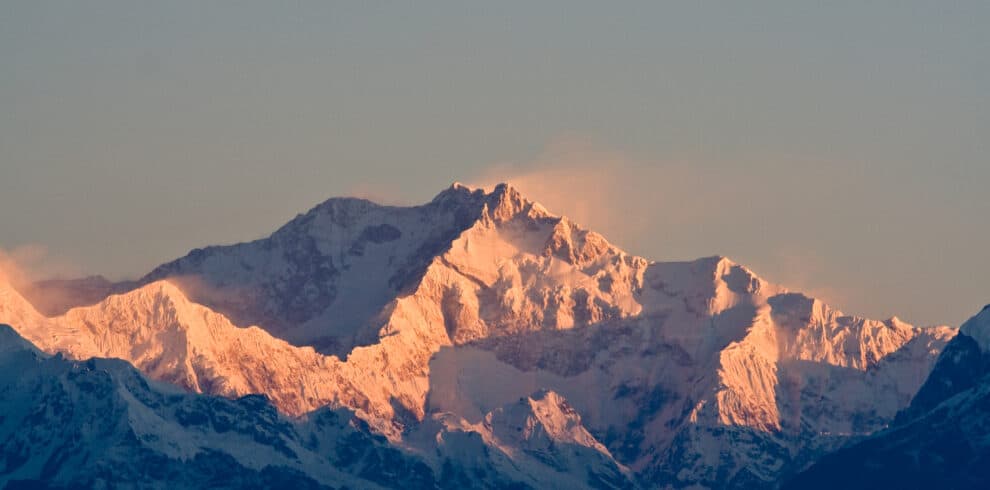
Kanchenjunga Circuit Trek is a thrilling trek that takes you far into the Eastern side of Nepal. You will come face to face with the third highest peak in the world, during this tough but immensely rewarding trek. You will get a mesmerizing greeting from snowy peaks like Kabru, Rathong, Jannu Himal as well as the Yalung Glacier. From the first day itself, the lush green forests and sprawling farmlands will welcome you on the trail. This trek is demanding and will challenge you with steep inclines, narrow trails, and off-beaten, rocky terrains. It is this challenge that makes the…

Mt. Kanchenjunga (8,586m), is the third highest mountain in the world after Mount Everest and K2,It is situated in the Kanchenjunga Conservation Area which was designated as a conservation area in March 1998 and covers an area of 2035 sq km in the Taplejung district, in the north eastern corner of Nepal. The region comprises some of the most stunning scenery to be found anywhere in Nepal. It is also a global hotspot for plant biodiversity. 23 species of rhododendrons alone have been identified by botanists in the area. Its rich forests support more than 250 species of birds and…

